It has been more than a month since we got back from Chile. We have had time to catch up with family, friends and school. We continue to reflect and attempt to make sense of the whole experience. There are plenty of stories still stored in the ink bottle, and we plan to write them out. We do not know who will be reading this journal now that this phase of the expedition is over; we nevertheless intend to populate these pages.
As we travel through Chile we thought of writing this story every time we came across a new warning sign. It is enlightening to visit new places and learn about different cultures. To taste new flavors, and learn of novel ways of seeing the world. It is also interesting to face different warning signs that might be obvious in the new setting, but completely foreign for those who come from distant lands.
We encounter a couple of times a warning sign related to sun exposure. This sign indicates the current levels of Ultra Violet (UV) rays, and describes the amount of protection needed to fend from this harmful radiation. It shows an UV index from 1 to 11+, with three separate categories. 1-2 no protection is needed (probably at night), 3-7 protection is needed, and 8-11+ extra protection is needed. Normal protection is to stay in the shadow between 10 am and 5 pm, use long sleeve shirts, long pants, closed shoes and a hat. Use UV-A or UV-B sunglasses and sunscreen with 30 spf. The extra protection adds to avoid entirely being outdoors between 10 am and 5 pm if possible, and use sunscreen of 50 spf.
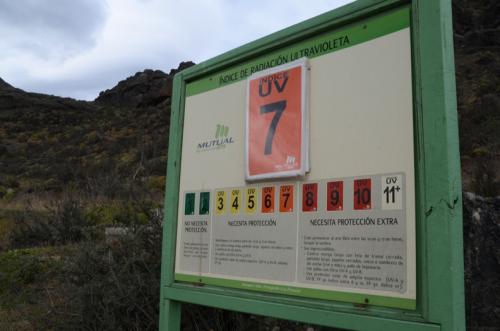
It makes sense to be warned against solar radiation living so far south, since the ozone protecting layer in the atmosphere is thinner near the South Pole. If you live in a large and polluted city you might be asking yourself, "is it not bad to breath ozone? Why do you want to have ozone near Antarctica?". It is true that it is dangerous to breath ozone, but it is also true that we need to have a layer of ozone high in the atmosphere, about 10 km from the surface, in the stratosphere, to absorb some of the UV rays that arrive from the sun. It makes sense then that people living close to Antarctica need to pay more attention to their solar exposure than we do in the Midwest of the United States.
While in Punta Arenas we were also reminded about the possibility of encountering a Tsunami, the large ocean waves generated by earthquakes or mudslides in the ocean floor, that end up pushing large quantities of water towards the shore (you can check out a blog I posted on Tsunamis on my previous PolarTREC expedition). This is not a threat back home in the Midwest, but in the coastal waters of Chile is very important to be aware and know what to do when a tsunami approaches land.
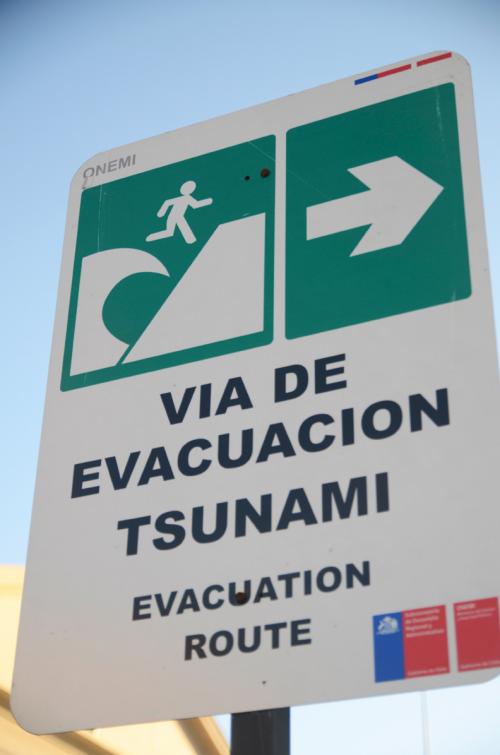
We had not seen a strong wind warning until we went to Torres del Paine. The winds can be very strong all over the Chilean Pampa, but they can be particularly strong near mountain gaps where winds are funneled to create even stronger currents. Winds were relatively calm when we got to Torres del Paine, but even then, they were pretty strong.

Here is another warning sign, perhaps more common than the others, but still interesting. I have never known why we place these signs on roads that are prone to have falling rocks. It is not that we will decide to turn around and find another route, or that we can do anything to prevent the rocks from falling. Perhaps it is just a warning so if we are hit by a falling rock, someone can say, "see, we told you this could happen".
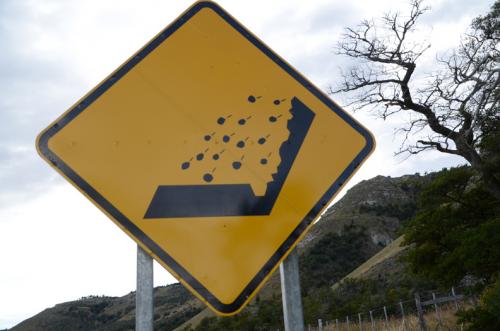
Some signs are not really warnings, but requests to not do something. I have never seen one in which I am asked not to feed the foxes, like in this sign that we found in Torres del Paine. Growing up in a very large city, like Mexico City, it seems so strange to think that I might even have the chance to feed foxes. I wish we could have at least seen one of the hungry animals approaching us for a snack.
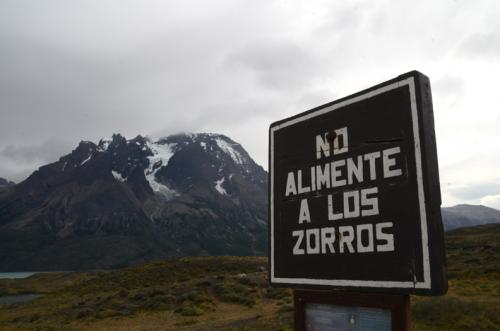
I do not mean to make fun of whoever wrote this sign. I have seen pretty bad translations in the United States as well, but I cannot pass the opportunity to share this one. We found it in the bathrooms at the entrance of Torres del Paine national park, and is intended to prevent people camping in the park from washing their eating utensils in the bathroom sinks. All I can say is, unique.

And this last one is not a warning nor a preventive message. I jut love the message written on this wall in Punta Arenas. It reads "We do not want any more concrete or constructions, we want more trees and flowers".
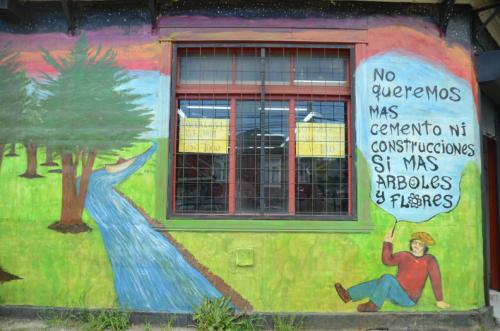


Comments